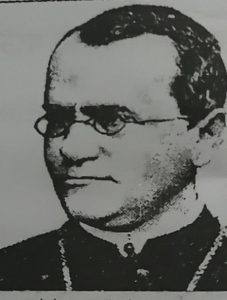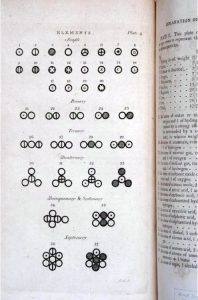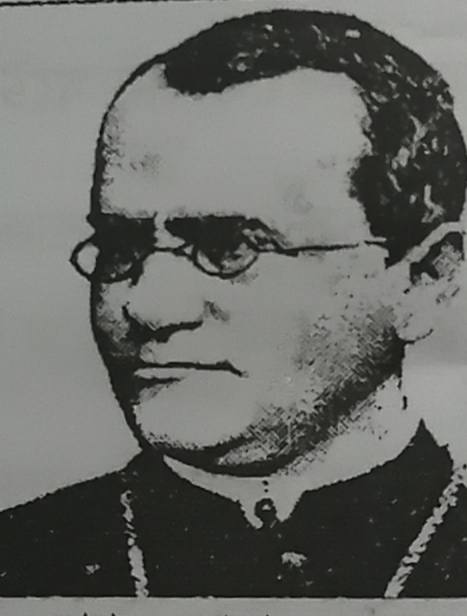Gregor Mendel discovered the essential principles of heredity through experiments with pea plants, long before the invention of polymer and genes. monastic was AN friar monk at St Thomas’s Abbey close to Brünn (now Brunn, within the Czech Republic). He studied natural sciences and arithmetic at the University of Vienna, Austria, however double did not acquire a teacher’s certificate, instead changing into a part-time assistant teacher and winding up analysis in plant breeding.

His most notable experiments were done between 1857 and 1864, throughout which period he grew some ten,000 pea plants. Pea plants area unit hermaphroditic, that means they need each male and feminine sex cells and frequently fertilise themselves. monastic was able to cross-breed the plants by transferring spore with a brush. He meticulously recorded a variety of characteristics for every plant, together with its height, pod shape, pea form and pea color. once plants autogamous , these characteristics remained consistent within the offspring.
At the time, it absolutely was wide believed that heredity worked by mixing the characteristics of fogeys, manufacturing offspring that were in how diluted. monastic showed that once 2 types of purebred plants cross-breed, the offspring resembled one or alternative of the fogeys, not a mix of the 2. He found that some traits area unit dominant and would perpetually be expressed in an exceedingly 1st generation cross, whereas others area unit recessive and wouldn’t seem during this generation. However, these recessive traits re-appear within the next generation if these first-generation plants self-fertilise.
Mendel hypothesised that oldsters contribute some particulate substance to the offspring that confirm its inheritable characteristics. we have a tendency to currently apprehend that these particles correspond to genes product of polymer. with none data of the molecules concerned, monastic was able to infer that inheritable particles area unit separated into gametes – eggs and gamete – which offspring inherit one particle from every parent.
Mendel was so much earlier than his time, and his work was for the most part unnoticed for subsequent thirty five years. In 1868 he was appointed as AN superior and, flooded with body duties, had very little time left to continue his analysis. Late in his career, he wrote: “My scientific work brought American state such satisfaction, and that i am convinced the whole world can recognise the results of those studies.” He died in 1884, aged 62.
In 1900, 3 scientists severally confirmed his work, however it absolutely was another thirty years before his conclusions were wide accepted. Then organic process biologists like Ronald Fisher complete that Mendel’s laws of inheritance might justify however natural action might create useful traits become additional rife and eliminate negative ones. His work fashioned a part of “the fashionable synthesis”, a reformulation of Darwin’s ideas supported the new understanding of biological science.
Mendel to DNA Structure to Translational Medicine
This week (November 7-8, 2013) the Library of Congress can celebrate the lifetime of Gregor monastic, the invention of desoxyribonucleic acid structure, and therefore the discoveries in biology that ar critically necessary for the advancement of clinical and translational drugs.
Gregor monastic, a Silesian mendicant called the daddy of genetic science initiated experimental studies on the laws of inheritance employing a type of plants as well as peas. His discovery of the laws, currently called monk inheritance, was a scientific breakthrough that was ab initio unnoted. botanist bestowed his leads to a paper, Versuche über Pflanzenhybriden [Experiments on Plant Hybridization] at 2 conferences of the explanation Society of Brunn in geographic region on February eight and March eight, 1865. once Mendel’s displays, the key component of inheritance, polymer (DNA), was initial isolated by Friedrich Miescher, a Swiss Dr. at the University of Tübingen in 1869.
The relationship between desoxyribonucleic acid and inheritance wasn’t uncovered till the twentieth century. The uncovering of Mendel’s results was followed by a body theory of inheritance associate degreed by an understanding of however complicated traits concerned multiple monk determinants. By the center of the twentieth century, desoxyribonucleic acid was thought to be the repository of genetic info and therefore the molecule became attention of intense study. it had been sixty years agone that James Dewey Watson and biochemist printed their monumental paper Molecular Structure of macromolecules: A Structure for sugar Nucleic Acid in Nature, v. 4356, April 25, 1953: 787-788 claiming their discovery of the structure of desoxyribonucleic acid and indicating however the structure of desoxyribonucleic acid might facilitate the storage and inheritance of genetic info.
The Library’s Science, Technology, and Business Division is sponsoring a discussion and lecture/book linguistic communication for the sixtieth day of the invention of desoxyribonucleic acid structure.
On Gregorian calendar month seventh, a panel can discuss “Translational Medicine: Advancing from Bench to side.” The panel is tempered by Orla Smith, the editor in chief of the Science translational drugs and includes 2 outstanding altruist laureates: Dr. James Dewey Watson, associate author of the paper printed in Nature sixty years past and Dr. Carol Greider, a recent Nobelist in Physiology or drugs supported her co-discovery that telomeres area unit shielded from progressive shortening by the catalyst known as enzyme. Carol Greider is that the Daniel Nathans academic and Director of biology and biological science at Johns Hopkins University. The discussion starts at 11:30 a.m. within the state capital space on the sixth floor of the President Building, one hundred and one Independence Ave. S.E., Washington, D.C.
On Gregorian calendar month eighth, the Division can sponsor Gregorian calendar month Klein, Director retired of the Planck Society for the Advancement of Science and current Frances R. and mythical being M. Pentz prof of Science within the Department of Biology at Pennsylvania State University for a chat on his life history of Gregor Mendel, Solitude of a humble genius-Gregor Mendel. A native of the Czech Republic- the region wherever monk conjointly known as home- Klein is associate internationally legendary immuno-geneticist and has done intensive analysis on Mendel’s work victimization the scientist’s original papers and notes. Klein’s presentation is accompanied with illustrations by joint author and nature artist, Norman Klein. This event can begin at 11:30 a.m. within the state capital space on the sixth floor of the President Building, one hundred and one Independence Ave. S.E.,Washington,D.C.
These programs area unit free and receptive the general public. Tickets don’t seem to be needed, however house is restricted and early arrival is suggested. Also, these events are going to be recorded and later broadcast on the Library’s webcast and YouTube pages within the coming back months.





